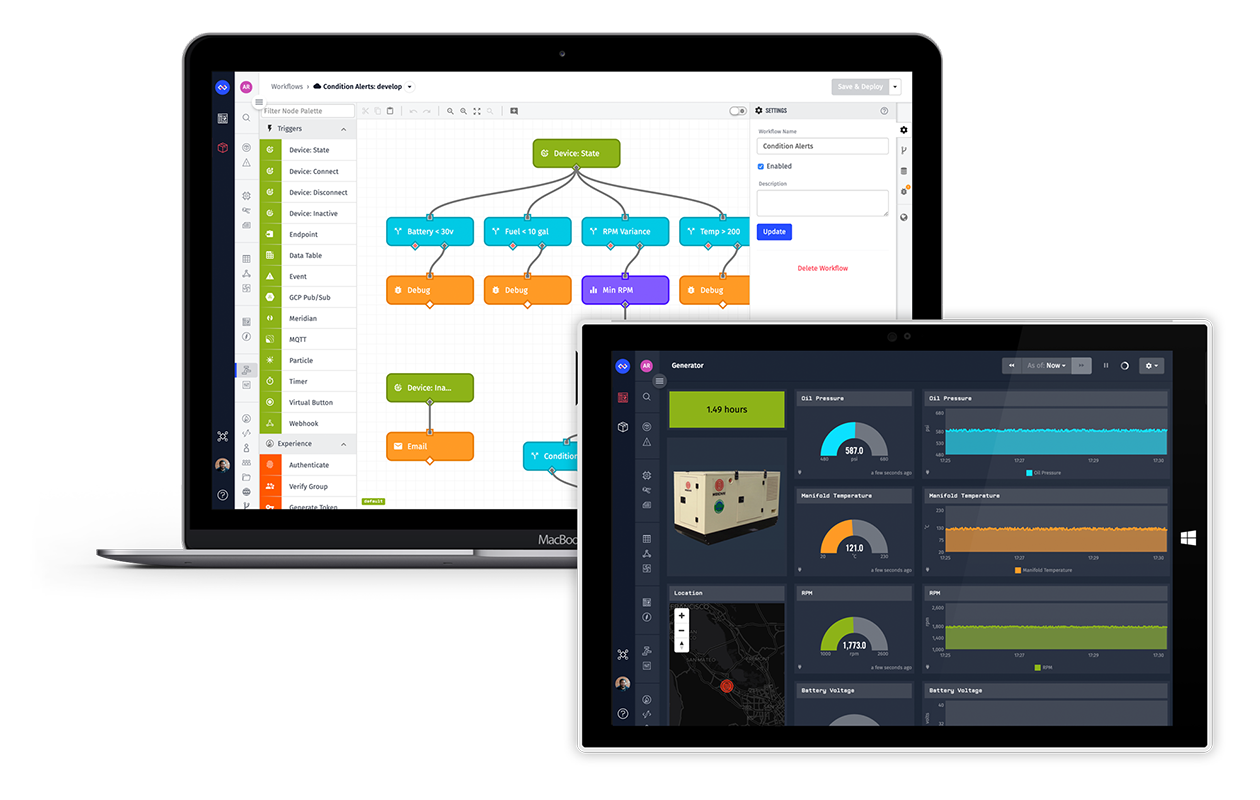IoT helps enterprises gather data and respond to it. Are you just getting started? Review our list of frequently asked questions and industry terms. Download the pdf of FAQs to share with your team.
IoT FAQs
-
What is IoT?
The Internet of Things refers to the network of things (physical objects) that can be connected to the Internet to collect and share data without human-to-human or human-to-computer interaction.
-
Why is it called the Internet of Things?
The term Internet of Things was coined by Kevin Ashton in 1999.
Stemming from Kevin Ashton’s experience with RFID, the term Internet of Things originally described the concept of tagging every object in a person’s life with machine readable codes. This would allow computers to easily manage and inventory all of these things.
The term IoT today has evolved to a much broader prospect. It now encompasses ubiquitous connectivity, devices, sensors, analytics, machine learning, and many other technologies.
-
What is an IoT solution?
An IoT solution is a combination of devices or other data sources, outfitted with sensors and internet connected hardware to securely report information back to an IoT platform. This information is often a physical metric which can help users answer a question or solve a specific problem.
-
What is an IoT Proof of Concept (PoC)?
The purpose of a PoC is to experiment with a solution in your environment, collect data, and evaluate performance from a set timeline on a set budget. A proof of concept is a low-risk way to introduce IoT to an organization.
-
What is an IoT cloud platform?
An IoT platform provides users with one or more of these key elements — visualization tools, data security features, a workflow engine and a custom user interface to utilize the information collected from devices and other data sources in the field. Cloud platforms are based in the cloud and can be accessed from anywhere.
-
What is an Application Enablement Platform?
An application enablement platform is an IoT platform that provides developers with the tools to quickly build a working application and user interface with very little code. AEPs allow organizations to scale faster and gain value from IoT investments faster by removing technology hurdles.
-
What is edge computing in IoT?
Edge computing is a method which enables devices to process data at or near where it is collected instead of sending it to a data center or to the cloud. Edge computing is used to achieve local optimized control, operate in spite of intermittent connectivity or immediately filter data, sending only what is necessary to the cloud.
-
What is industrial equipment monitoring?
Industrial equipment monitoring uses a network of connected sensors - either native to a piece of equipment or retrofitted - to inform owners/operators of a machine’s output, component conditions, need for service or impending failure. Industrial equipment monitoring is an IoT solution which can utilize an IoT platform to unify disparate data and enable decision makers to respond to real-time data.
-
What is condition-based maintenance?
Condition-based maintenance or CBM is a method of proactive maintenance which enables owners to respond to conditions only when a need arises. Conditions of machine components are monitored using IoT (sensors, a network connection and gateways).
-
What is predictive maintenance?
Predictive maintenance refers to a method of maintenance created using IoT that relies on data from a combination of sources including machine components and other indicators which inform an owner/operator of the items requiring attention before any service interruption occurs. Predictive maintenance often requires a large supply of historical data in order to function appropriately.

One Powerful Platform
The Losant Enterprise IoT Platform is an application enablement platform which allows enterprises to effectively build applications that securely scale to millions of devices. With real-time stream processing and batch processing capabilities, users can create dynamic experiences and perform complex analytics. All of Losant’s components, from Edge Compute to End-User Experiences, work seamlessly together to transform data into tailored IoT solutions.

